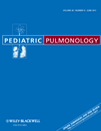Neuromuscular electrical stimulation is no more effective than usual care for the treatment of primary dysphagia in children
Abstract
Objective
Dysphagia can lead to chronic aspiration and pulmonary disease. The objective of this study was to compare change in swallowing function in pediatric patients with dysphagia who received neuromuscular electrical stimulation (NMES) to a control group who received usual oral motor training and dietary manipulations without NMES.
Study design
Retrospective analysis of change in Functional Oral Intake Scale (FOIS) level derived from videofluoscopic swallowing studies performed before and after NMES (treatment group: N = 46) compared to control group (control group: N = 47). Children were classified into two groups based on the etiology of their dysphagia (primary vs. acquired). NMES took place in a tertiary medical center for an average of 22 treatment sessions over 10 weeks. An independent t-test was used to test for differences in the change in FOIS level between groups. An analysis of covariance was run within groups to assess the relationship between diagnosis and change in FOIS level.
Results
Both groups improved in their FOIS level (P < 0.01) but the amount of change was not different (P = 0.11). Only the treatment group who had acquired dysphagia improved more than the similar subgroup of control children (P = 0.007).
Conclusion
NMES treatment of anterior neck muscles in a heterogeneous group of pediatric patients with dysphagia did not improve the swallow function more than that seen in patients who did not receive NMES treatment. However, there may be subgroups of children that will improve with NMES treatment. Pediatr. Pulmonol. 2011; 46:559–565. © 2010 Wiley-Liss, Inc.




